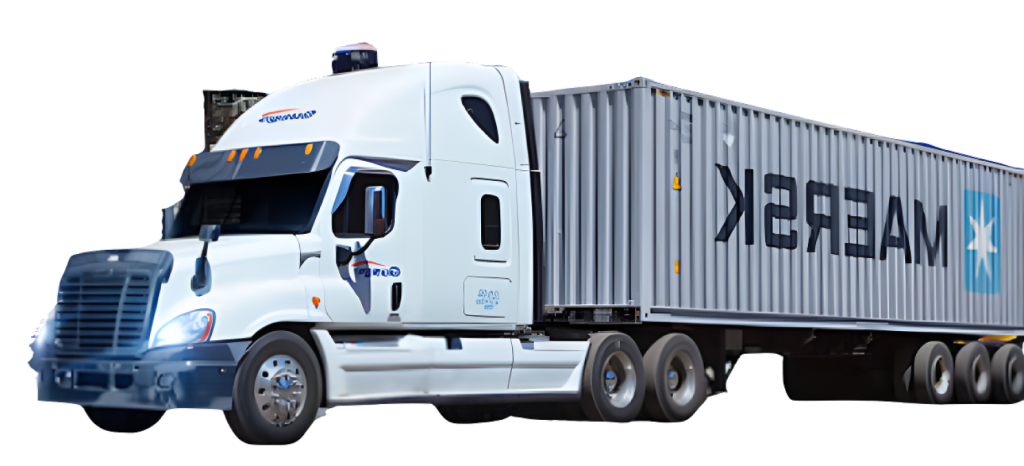PROVEN STRATEGIES FOR LOGISTICS EFFICIENCY AND PROFITABILITY
In today’s fast-paced and competitive market, mastering the art of shipping cost reduction is more vital than ever for businesses striving to maintain profitability while ensuring top-notch logistics efficiency. With a multitude of proven strategies available, including optimizing shipping routes, forming strategic 3PL partnerships, and leveraging technology to streamline operations, businesses can achieve significant transportation savings. This document will delve into actionable steps such as utilizing bulk shipping discounts, refining dimensional weight packaging, and conducting thorough shipping audits, all aimed at fostering cost-effective shipping solutions. By embracing these innovative tactics, small to medium-sized business owners, logistics managers, and supply chain professionals can transform their shipping processes, not only cutting costs but also enhancing customer satisfaction and driving sustainable growth.
Optimizing Shipping Routes
Strategic Route Planning
Strategic route planning is a cornerstone of shipping cost reduction and logistics efficiency. By analyzing and optimizing the paths that deliveries take, businesses can achieve significant transportation savings. Incorporating advanced route planning software can streamline this process, allowing for real-time adjustments based on traffic conditions and delivery windows. These tools consider various factors such as distance, fuel consumption, and vehicle capacity to propose the most efficient routes. Additionally, integrating GPS technology ensures that drivers have up-to-date information, reducing delays and enhancing customer satisfaction. Businesses should also engage in regular route audits to assess their effectiveness and identify opportunities for improvement. By carefully planning routes, companies can not only save on fuel costs but also extend the lifespan of their delivery vehicles through reduced wear and tear. This approach ultimately contributes to more sustainable and cost-effective shipping solutions, benefiting both the company and its customers.
Leveraging Transportation Savings Strategies
Leveraging transportation savings strategies is essential for reducing shipping costs while maintaining logistics efficiency. One effective approach is to consolidate shipments to maximize vehicle load, thereby reducing the number of trips required. This not only cuts fuel expenses but also minimizes labor costs associated with handling multiple deliveries. Additionally, negotiating better rates with carriers by promising consistent volume can lead to significant savings. Businesses should explore partnerships with third-party logistics providers (3PL) to tap into their expertise and networks, which can often offer more competitive pricing. Implementing technology solutions such as transportation management systems (TMS) can streamline operations, offering insights into cost-effective shipping solutions and improving decision-making processes. These systems also provide valuable data for conducting thorough shipping audits, allowing businesses to continuously refine their strategies. By adopting these transportation savings strategies, companies can create an agile, responsive logistics operation that supports sustainable growth and enhances customer satisfaction.
Partnering with Third-Party Logistics
Benefits of 3PL Partnerships
Partnering with third-party logistics (3PL) providers offers numerous advantages that can enhance logistics efficiency and drive down costs. 3PLs bring extensive industry expertise and access to advanced logistics technologies, which can streamline your supply chain operations. By leveraging their wide network, businesses can benefit from bulk shipping discounts, which are typically unavailable to small to medium-sized enterprises on their own. This can translate into substantial shipping cost reductions. Additionally, 3PL providers help optimize inventory management by offering storage and fulfillment solutions that are both flexible and scalable. This ensures that businesses can respond swiftly to market demand without incurring excessive overhead. Furthermore, by outsourcing logistics functions, companies can focus on core business activities, leaving the complexities of shipping and distribution to the experts. This not only enhances service quality but also improves customer satisfaction through reliable and timely deliveries. Ultimately, 3PL partnerships provide a strategic advantage in achieving cost-effective shipping solutions.
Selecting the Right 3PL Provider
Selecting the right 3PL provider is crucial for maximizing the benefits of third-party logistics partnerships. The first step is to clearly define your business needs and logistics goals. This includes understanding your shipping volumes, peak seasons, and specific service requirements. Once these parameters are set, evaluate potential 3PL partners based on their expertise, reputation, and technological capabilities. A provider with a robust transportation management system can offer valuable insights and facilitate logistics efficiency. It’s also important to consider the provider’s geographic coverage and their ability to offer cost-effective shipping solutions. Request references and case studies to assess their performance and reliability. Compatibility in terms of company culture and communication style can further enhance collaboration and service quality. Finally, ensure the 3PL provider is flexible and scalable, able to adapt to your business growth and changing market conditions. Making a well-informed decision in selecting your 3PL partner can significantly contribute to shipping cost reduction and improved supply chain performance.
Embracing Technological Solutions
Streamlining Operations with Technology
Streamlining operations with technology is a pivotal strategy for achieving logistics efficiency and reducing shipping costs. By integrating advanced software solutions, businesses can automate routine processes, thereby minimizing human error and increasing productivity. Transportation management systems (TMS) provide comprehensive tools for planning, executing, and optimizing the physical movement of goods. These systems offer real-time visibility into shipment status, enabling proactive management of logistics challenges. Additionally, employing warehouse management systems (WMS) can enhance inventory management, ensuring optimal stock levels and reducing the risk of overstocking or stockouts. Implementing data analytics tools can further empower companies to forecast demand accurately and plan resources accordingly. This level of operational insight is essential for conducting effective shipping audits, allowing businesses to continuously refine their strategies. By adopting these technological solutions, companies not only enhance their logistics processes but also create a more responsive, agile supply chain that supports sustainable growth and customer satisfaction.
Data Analytics for Forecasting
Data analytics for forecasting is an essential component in enhancing logistics efficiency and achieving cost-effective shipping solutions. Through the analysis of historical data and current market trends, businesses can predict future demand with greater accuracy. This foresight allows for better inventory management, ensuring that stock levels are aligned with anticipated demand, thus preventing costly overstock or stockouts. Furthermore, data-driven insights can optimize supply chain operations by identifying inefficiencies and areas for improvement. Predictive analytics tools enable logistics managers to anticipate potential disruptions and adjust strategies proactively, minimizing delays and associated costs. By leveraging data analytics, companies can make informed decisions regarding transportation savings strategies, such as adjusting shipping schedules or consolidating shipments to maximize efficiency. Ultimately, integrating data analytics into logistics operations helps organizations remain agile and competitive in a rapidly changing market, supporting sustainable growth and enhanced customer satisfaction through reliable and timely delivery services.
Packaging and Bulk Shipping Tactics
Dimensional Weight Packaging Strategies
Dimensional weight packaging strategies are crucial for reducing shipping costs and enhancing logistics efficiency. Dimensional weight pricing, used by most carriers, charges based on the package size rather than its actual weight. Therefore, optimizing packaging to minimize dimensions can lead to substantial savings. Businesses should evaluate their current packaging materials and design to ensure they are using appropriately sized boxes that do not contain excessive empty space. Implementing custom packaging solutions or adjustable box sizes can further optimize space utilization. Additionally, investing in high-quality, protective materials can reduce the need for oversized packaging, offering both cost and environmental benefits. Companies should conduct regular packaging audits to identify opportunities for improvement and ensure compliance with carrier guidelines. By focusing on dimensional weight packaging strategies, businesses not only achieve shipping cost reduction but also improve their sustainability practices, reducing their carbon footprint and aligning with increasingly eco-conscious consumer expectations.
Utilizing Bulk Shipping Discounts
Utilizing bulk shipping discounts is an effective strategy for achieving significant shipping cost reduction. Many carriers offer discounted rates for larger shipment volumes, presenting an opportunity for businesses to lower their transportation expenses. To take advantage of these discounts, companies can consolidate smaller shipments into larger ones, optimizing the load and minimizing the number of trips required. This approach not only reduces costs but also enhances logistics efficiency by decreasing handling times and improving delivery schedules. Additionally, forming strategic partnerships with third-party logistics providers (3PL) can grant businesses access to collective bargaining power, securing more favorable rates. It’s crucial for companies to regularly review their shipping volumes and negotiate with carriers to ensure they are receiving the best possible rates. By leveraging bulk shipping discounts, businesses can improve their bottom line, offering competitive pricing or passing savings onto customers, thereby enhancing customer satisfaction and fostering long-term growth.
Continuous Improvement Practices
Conducting Comprehensive Shipping Audits
Conducting comprehensive shipping audits is vital for maintaining logistics efficiency and achieving cost-effective shipping solutions. These audits involve a thorough review of shipping invoices and processes to identify discrepancies, errors, and potential areas for savings. By regularly auditing shipping practices, businesses can uncover issues such as incorrect billing, unclaimed refunds, and inefficiencies in carrier selection. This proactive approach allows companies to address problems promptly, avoiding unnecessary costs and optimizing their logistics operations. Additionally, shipping audits provide valuable data that can be used to negotiate better rates with carriers or adjust shipping strategies to align with current market conditions. Businesses should also analyze audit results to refine their packaging strategies, ensuring compliance with dimensional weight standards and minimizing excess packaging. By integrating regular shipping audits into their continuous improvement practices, companies can enhance their operational agility, reduce transportation expenses, and ultimately improve customer satisfaction through reliable and cost-effective delivery services.
Enhancing Inventory Management for Efficiency
Enhancing inventory management is a critical component of continuous improvement practices that can significantly impact logistics efficiency and shipping cost reduction. Effective inventory management ensures that stock levels are optimized to meet customer demand without overstocking, which ties up capital and increases storage costs. Implementing advanced inventory management systems allows businesses to track stock levels in real-time, improving accuracy and decision-making. These systems can also forecast demand based on historical data and market trends, enabling proactive adjustments to inventory levels. Just-in-time (JIT) inventory strategies can further reduce holding costs by aligning production schedules with demand. Additionally, enhancing inventory turnover rates through efficient replenishment processes reduces the risk of obsolescence and waste. Regular reviews of inventory policies and practices ensure alignment with business goals and market conditions. By focusing on efficient inventory management, companies can enhance their supply chain agility, reduce costs, and improve service levels, ultimately supporting sustainable growth and customer satisfaction.


